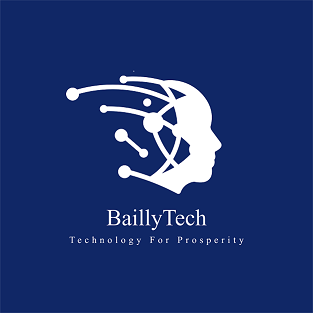Harnessing the Power of ChatGpt for Custom Chatbot Development: Enhancing User Experience and Efficiency

In recent years, the development of chatbots has become increasingly popular in the business world. These intelligent virtual assistants offer a range of benefits, such as improving user engagement, personalizing interactions, and streamlining customer support. One of the most powerful tools used for creating these custom chatbots is ChatGpt, a state-of-the-art language model developed by OpenAI. In this article, we will explore the various ways in which ChatGpt can be utilized to develop custom chatbots for businesses and organizations, discussing the associated benefits and potential drawbacks.
Before delving into the ways ChatGpt can be used for custom chatbot development, it is important to understand what ChatGpt is. ChatGpt is an advanced language model that uses deep learning to generate human-like responses in a conversational manner. It is trained on vast amounts of text data from the internet, allowing it to acquire a comprehensive understanding of language patterns and context. This makes ChatGpt an excellent choice for building intelligent chatbots that can hold natural-sounding conversations.
One of the key benefits of using ChatGpt for developing custom chatbots is the improved user engagement it brings. Due to its ability to generate human-like responses, ChatGpt can provide users with a more natural and immersive conversational experience. Whether it’s answering frequently asked questions, providing product recommendations, or even simulating realistic conversation partners, ChatGpt can engage users in a way that traditional rule-based chatbots cannot. This leads to higher customer satisfaction and increased conversion rates.
Another advantage offered by ChatGpt is its ability to personalize interactions. By analyzing user inputs and historical data, ChatGpt can tailor its responses to provide customized recommendations and suggestions. This level of personalization enhances the user experience by offering relevant information and solutions based on individual needs and preferences. For example, a retail chatbot powered by ChatGpt can analyze a customer’s purchase history to provide personalized product recommendations, significantly improving the chances of making a sale.
Furthermore, ChatGpt contributes to efficient and streamlined customer support. Traditional customer support often requires dedicated human agents, resulting in longer response times and limited availability. By utilizing ChatGpt-powered chatbots, organizations can offer instant support around the clock, eliminating wait times and reducing customer frustration. ChatGpt can handle a wide range of customer inquiries autonomously, such as tracking orders, providing troubleshooting assistance, and even managing complex tasks like flight bookings. This helps to optimize resource allocation and improve overall operational efficiency.
Despite its many advantages, there are potential drawbacks to using ChatGpt for custom chatbot development. One challenge is ensuring the accuracy of responses. ChatGpt relies solely on the data it was trained on, which might include biased or incorrect information. This can lead to erroneous responses or perpetuation of misinformation. Continuous monitoring and improvement of the chatbot’s knowledge base are crucial to mitigate this risk. Implementing feedback loops and incorporating user feedback helps refine the chatbot’s responses and ensures accuracy in providing information.
Additionally, ChatGpt does have limitations in handling edge cases or highly specific queries. While it excels at generating contextually appropriate responses, there may be instances where it struggles to understand or provide satisfactory answers. In such cases, it is essential to have fallback mechanisms in place, allowing escalation to human agents when necessary. This ensures that users receive the support they need, even in scenarios beyond the capabilities of the chatbot.
Several organizations have successfully implemented ChatGpt-powered chatbots, revolutionizing their customer service operations. Bank of America’s chatbot, Erica, powered by ChatGpt, assists customers with various banking inquiries and provides personalized financial advice. By combining advanced natural language processing with user-specific data, Erica has effectively enhanced customer engagement and improved financial literacy.
To leverage ChatGpt effectively, there are some best practices to consider. Firstly, it is essential to provide clear instructions to users on how to interact with the chatbot to obtain the best results. Clearly defining the bot’s limitations and expectations helps manage user expectations and prevents frustration. Secondly, regularly updating and expanding the chatbot’s knowledge base is essential to keep up with evolving user needs and to address any gaps in its understanding. Lastly, having a robust feedback system in place allows users to provide input and helps developers continuously refine and improve the chatbot’s performance.
In conclusion, ChatGpt has proven to be a powerful tool for developing custom chatbots that enhance user experience and improve operational efficiency. Leveraging ChatGpt allows businesses and organizations to provide improved user engagement, personalized interactions, and streamlined customer support. While challenges exist in ensuring accurate responses and managing edge cases, continuous monitoring and improvement can mitigate these drawbacks. By adopting ChatGpt-powered custom chatbots, companies can revolutionize customer service and unlock new opportunities for growth and customer satisfaction.
